Sustainable Development of the Automobile Industry in the United States, Europe, and Japan with Special Focus on the Vehicles’ Power Sources
Abstract
:1. Introduction
2. The History of the Automobile Industries
3. Customers’ Demand
4. Environmental Issues and Emissions Regulations
5. Recent Development in Automobile Engines
5.1. Variable Valve Timing (VVT)
5.1.1. Ford Ti-VCT
5.1.2. Toyota VVT-i
5.1.3. Porsche VarioCam
5.1.4. Other Strategies
5.2. IC Engine Structures
5.2.1. Inline Engine
5.2.2. V Engine
5.2.3. Flat Engine
5.3. Clean Vehicles
5.3.1. Battery Electric Vehicles
5.3.2. Hybrid Electric Vehicles
5.3.3. Fuel Cell Electric Vehicles
5.3.4. Other Clean Vehicles
6. Future Plans
7. Conclusions
Author Contributions
Funding
Acknowledgments
Conflicts of Interest
References
- Dobson, M.D.W. The Automotive Industry Development Process for Major Radically New Technologies. Inception to Production: A Study of Electric and Hybrid Electric Vehicles. Ph.D. Thesis, Massachusetts Institute of Technology, Cambridge, MA, USA, 2000. [Google Scholar]
- Iodice, P.; Langella, G.; Amoresano, A. Ethanol in Gasoline Fuel Blends: Effect On Fuel Consumption And Engine Out Emissions Of Si Engines In Cold Operating Conditions. Appl. Therm. Eng. 2018, 130, 1081–1089. [Google Scholar] [CrossRef]
- Sato, F.E.K.; Nakata, T. Energy Consumption Analysis for Vehicle Production through a Material Flow Approach. Energies 2020, 13, 2396. [Google Scholar] [CrossRef]
- Parthasarathy, P.; Narayanan, S.K. Effect of Hydrothermal Carbonization Reaction Parameters on. Environ. Prog. Sustain. Energy 2014, 33, 676–680. [Google Scholar]
- History of the American Car Industry. 1 November 2019. Available online: https://www.pilotguides.com/articles/american-car-industry/ (accessed on 7 September 2020).
- Bellis, M. The Duryea Brothers. 2006. Available online: http://theinventors.org/library/inventors/blDuryea.htm (accessed on 8 September 2020).
- American Automotive Policy Council, State of the U.S. Automotive Industry. Available online: http://www.americanautocouncil.org/sites/aapc2016/files/2018%20Economic%20Contribution%20Report.pdf (accessed on 24 December 2020).
- U.S. Bureau of Economic Analysis, United States Exports of Automotive. July 2020. Available online: https://tradingeconomics.com/united-states/exports-of-automotive (accessed on 2 October 2020).
- Who Invented the Automobile? 2 September 2020. Available online: https://www.loc.gov/item/who-invented-the-automobile/ (accessed on 8 September 2020).
- Bellis, M. How the Assembly Line Revolutionized the Car Industry. 24 September 2018. Available online: https://www.thoughtco.com/history-of-car-assembly-line-4072559 (accessed on 6 September 2020).
- Battery Electric Vehicles’ Market in Europe. 25 September 2019. Available online: https://www.interregeurope.eu/e-mopoli/news/news-article/9483/news-battery-electric-vehicles-market-in-europe/ (accessed on 7 September 2020).
- European Automobile Manufacturers Association, Facts about the Automobile Industry. 17 February 2017. Available online: https://www.acea.be/automobile-industry/facts-about-the-industry (accessed on 6 September 2020).
- History of Japanese Automobile Industry. 17 February 2017. Available online: https://info.japanesecartrade.com/content-item/276-history-of-japanese-automobile-industry (accessed on 6 September 2020).
- Japan Automobile Manufacturers Association. The Motor Industry of Japan; Japan Automobile Manufacturers Association: Tokyo, Japan, 2019. [Google Scholar]
- Neely, C. The Japanese Automotive Industry. 19 December 2017. Available online: https://www.japanindustrynews.com/2016/03/japanese-automotive-industry/ (accessed on 7 September 2020).
- European Automobile Manufacturers’ Association, EU Production. 2019. Available online: https://www.acea.be/statistics/tag/category/eu-production (accessed on 3 October 2020).
- Japan Automobile Manufacturers Association, Japan Car Production. June 2020. Available online: https://tradingeconomics.com/japan/car-production (accessed on 3 October 2020).
- Tulumba, C. 2019 US Vehicle Sales Figures by Model. 3 January 2020. Available online: https://www.goodcarbadcar.net/2019-us-vehicle-sales-figures-by-model/ (accessed on 8 September 2020).
- Bekker, H. 2019 (Full Year) Japan: Best-Selling Car Models—Car Sales Statistics. 9 January 2020. Available online: https://www.best-selling-cars.com/japan/2019-full-year-japan-best-selling-car-models/ (accessed on 8 September 2020).
- European Automobile Manufacturers Association, Fuel Types of New Cars: Diesel −23.6%, Electric +33.1% in Fourth Quarter of 2018|ACEA. 2 July 2019. Available online: https://www.acea.be/press-releases/article/fuel-types-of-new-cars-diesel-23.6-electric-33.1-in-fourth-quarter-of-2018 (accessed on 8 September 2020).
- Bekker, H. 2017 (Full Year) Europe: Top-Selling Car Models—Car Sales Statistics. 29 January 2018. Available online: https://www.best-selling-cars.com/europe/2017-full-year-europe-top-selling-car-models/ (accessed on 8 September 2020).
- United States Environmental Protection Agency. The Plain English Guide to the Clean Air Act; United States Environmental Protection Agency: Washington, DC, USA, 2007; p. 28.
- U.S. Department of Transportation. Estimated U.S. Average Vehicle Emissions Rates per Vehicle by Vehicle Type Using Gasoline and Diesel|Bureau of Transportation Statistics. 6 April 2018. Available online: https://www.bts.gov/content/estimated-national-average-vehicle-emissions-rates-vehicle-vehicle-type-using-gasoline-and (accessed on 8 September 2020).
- California: Diesel Risk Reduction Program|Transport Policy. 22 June 2019. Available online: http://www.transportpolicy.net/standard/california-diesel-risk-reduction-program/ (accessed on 8 September 2020).
- Emission Standards: Japan: Automotive NOx and PM Law. July 2015. Available online: https://dieselnet.com/standards/jp/noxpmlaw.php (accessed on 8 September 2020).
- Hasunuma, H.; Ishimaru, Y.; Yoda, Y.; Shima, M. Decline of ambient air pollution levels due to measures to control automobile emissions and effects on the prevalence of respiratory and allergic disorders among children in Japan. Environ. Res. 2014, 131, 111–118. [Google Scholar] [CrossRef] [PubMed]
- Emission Standards: European Union: Low Emission Zones (LEZ). July 2015. Available online: https://dieselnet.com/standards/eu/lez.php (accessed on 8 September 2020).
- International Council on Clean Transportation. European Vehicle Categories; International Council on Clean Transportation: Washington, DC, USA, 2018. [Google Scholar]
- Fuel Blends|ePURE—European Renewable Ethanol. Available online: https://www.epure.org/about-ethanol/fuel-market/fuel-blends/ (accessed on 21 November 2020).
- Hahn, E. LPG: What is LPG?—LPG Gas—Liquefied Petroleum Gas (Uses—How Made). 1 January 2020. Available online: https://www.elgas.com.au/blog/492-what-is-lpg-lpg-gas-lp-gas (accessed on 22 November 2020).
- The European Biodiesel Board. Joint Declaration for Legal Consistency of the Eu Alternative Fuels Definition; The European Biodiesel Board: Brussels, Belgium, 2020. [Google Scholar]
- U.S. Department of Energy, Alternative Fuels Data Center: Ethanol Blends. Available online: https://afdc.energy.gov/fuels/ethanol_blends.html (accessed on 21 November 2020).
- U.S. Department of Energy, Alternative Fuels Data Center: Ethanol Fuel Basics. Available online: https://afdc.energy.gov/fuels/ethanol_fuel_basics.html (accessed on 21 November 2020).
- U.S. Department of Energy, Alternative Fuels Data Center: Renewable Fuel Standard. Available online: https://afdc.energy.gov/laws/RFS (accessed on 21 November 2020).
- Japan. Biofuels Annual. 13 July 2015. Available online: https://www.agrochart.com/en/news/2702/japan-biofuels-annual-july-2015.html (accessed on 23 November 2020).
- NEXT MOBILITY. Toyota Motor Unveils World’s First “Flex Fuel Hybrid Vehicle” Prototype in Brazil, NEXT MOBILITY. 20 March 2018. Available online: https://www.nextmobility.jp/new_technology/toyota-unveils-the-worlds-first-flex-fuel-hybrid-vehicle-prototype-in-brazil20180320/ (accessed on 22 November 2020).
- Serrano, J.R.; Arnau, F.J.; Martín, J.; Auñón, Á. Development of a Variable Valve Actuation Control to Improve Diesel Oxidation Catalyst Efficiency and Emissions in a Light Duty Diesel Engine. Energies 2020, 13, 4561. [Google Scholar] [CrossRef]
- Twin Independent Variable Camshaft Timing (Ti-Vct). 30 November 2009. Available online: http://ophelia.sdsu.edu:8080/ford/06-03-2012/news-center/press-releases-detail/pr-twin-independent-variable-camshaft-31280.html (accessed on 8 September 2020).
- Toyota Global Newsroom. Provides Outstanding Performance and Fuel Economy; Toyota Global Newsroom: Plano, TX, USA, 2020. [Google Scholar]
- Porsche Engineering. Porsche Eng. Mag. 2012, 2, 2012.
- North American Council for Freight Efficiency. Engine Downspeeding—North American Council for Freight Efficiency. Available online: https://nacfe.org/technology/downspeeding/ (accessed on 13 December 2020).
- Nieman, A. The right solution for downsped engines. Managing Higher Driveline Torques to Maximize Fuel Economy. Available online: https://www.oemoffhighway.com/drivetrains/whitepaper/12076709/dana-spicer-offhighway-managing-higher-driveline-torques-to-maximize-fuel-economy (accessed on 24 December 2020).
- Spicer Life Series 350 Driveshaft SPL-350|Dana Commercial Vehicle. 2020. Available online: http://global.dana.com/commercial-vehicles/products/driveline/driveshafts/spl350 (accessed on 13 December 2020).
- One Sweet Ride|Volvo Trucks USA. 9 October 2018. Available online: https://www.volvotrucks.us/news-and-stories/volvo-trucks-magazine/the-right-technology-at-the-right-time/ (accessed on 13 December 2020).
- Volvo Improves Its Turbo Compounding Engine Tech in More Fuel Efficient D13TC. 6 September 2019. Available online: https://www.equipmentworld.com/volvo-improves-its-turbo-compounding-tech-in-more-fuel-efficient-d13tc/ (accessed on 14 December 2020).
- Srinivasan, A. Strategic Insights into Engine Downsizing Trends of North American Heavy-duty Truck Manufacturers A 2% to 3% Reduction in Class 8 Truck Engine Displacement Expected by 2018 Ananth Srinivasan Industry Analyst-Global Commercial Vehicle Research. Available online: http://www.automotiveworld.com/wp-content/uploads/2013/04/Frost-Sullivan.pdf (accessed on 24 December 2020).
- Edelstein, S. VW Suggests Engine Downsizing is Done; Emissions Rules Are the Reason. 8 February 2017. Available online: https://www.greencarreports.com/news/1108773_vw-suggests-engine-downsizing-is-done-emissions-rules-are-the-reason (accessed on 14 December 2020).
- Frost, L.; Flak, A. Exclusive: Carmakers Forced Back to Bigger Engines in New Emissions Era|Reuters. 14 October 2016. Available online: https://www.reuters.com/article/us-autoshow-paris-engines-exclusive-idUSKBN12E11K (accessed on 14 December 2020).
- Toyota, Toyota’s Revamped Turbo Diesel Engines Offer More Torque, Greater Efficiency and Lower Emissions|Toyota Motor Corporation Official Global Website. 19 June 2015. Available online: https://global.toyota/en/detail/8348091 (accessed on 14 December 2020).
- Holmes, J. Mercedes-Benz Launching Stratified Direct Injection Engine. 15 June 2016. Available online: https://www.motor1.com/news/63926/mercedes-benz-launching-stratified-direct-injection-engine/ (accessed on 13 December 2020).
- FSI/TFSI Principle—Audi Technology Portal. 2011. Available online: https://www.audi-technology-portal.de/en/drivetrain/engine-efficiency-technologies/fsi-tfsi-principle (accessed on 13 December 2020).
- Audi Michiana, Audi TFSI Engine- How it Works|Mishawaka, IN Audi Dealership. Available online: https://www.audimichiana.com/audi-tfsi--engine.htm (accessed on 13 December 2020).
- Under the Microscope: BlueDIRECT—3rd Generation Spray-Guided Direct Injection: Two New Operating Modes for Extended Lean-Burn Operation—Daimler Global Media Site. 4 October 2010. Available online: https://media.daimler.com/marsMediaSite/en/instance/ko.xhtml?oid=9361897 (accessed on 13 December 2020).
- Ramsey, P. Around and Around—Where the Oil Goes in Your Engine. 2 March 2020. Available online: https://www.machinerylubrication.com/Read/532/around-around-where-oil-goes-in-your-engine (accessed on 3 October 2020).
- Jefferson, A. The Pros and Cons of Different Engine Types. July 2018. Available online: http://www.proctorcars.com/the-pros-and-cons-of-different-engine-types/ (accessed on 8 September 2020).
- Leanse, A. 2020 Chevrolet Sonic Buyer’s Guide: Reviews, Specs, Comparisons. 1 October 2019. Available online: https://www.motortrend.com/cars/chevrolet/sonic/ (accessed on 8 September 2020).
- GM 1.4-Liter Turbo I4 LE2 Engine. 2017. Available online: https://gmauthority.com/blog/gm/gm-engines/le2/ (accessed on 8 September 2020).
- Stewart, M. 2017 Honda Fit Buyer’s Guide: Reviews, Specs, Comparisons. 2017. Available online: https://www.motortrend.com/cars/honda/fit/2017/ (accessed on 8 September 2020).
- Honda Global|Earth Dreams Technology. 21 November 2017. Available online: https://global.honda/innovation/technology/automobile/EarthDreamsTechnology.html (accessed on 8 September 2020).
- Chen, K.-H.; Chao, Y.-C. Characterization of Performance of Short Stroke Engines with Valve Timing for Blended Bioethanol Internal Combustion. Energies 2019, 12, 759. [Google Scholar] [CrossRef] [Green Version]
- Vincentric, 2017 FIAT 500 Pop 2dr Hatchback Specs and Prices. 2017. Available online: https://www.autoblog.com/buy/2017-FIAT-500-Pop__2dr_Hatchback/specs/ (accessed on 8 September 2020).
- Read, T. 2016 Chevrolet Cruze Features New Ecotec Engines. 2016. Available online: https://media.chevrolet.com/media/us/en/chevrolet/news.detail.html/content/Pages/news/us/en/2015/jun/innovation/powertrain/0624-cruze-powertrain.html (accessed on 4 October 2020).
- Mishra, P. What Is Engine? What Are Its Types? 9 February 2014. Available online: https://www.mechanicalbooster.com/2014/02/what-is-engine-what-are-its-types.html (accessed on 3 October 2020).
- McDonald, B. Ford’s EcoBoost Engine: Big Power with Fuel Efficiency—Opportunity or Challenge for You? 20 October 2017. Available online: https://www.enginebuildermag.com/2017/10/fords-ecoboost-engine-big-power-fuel-efficiency-opportunity-challenge/ (accessed on 5 October 2020).
- 2017 Toyota Highlander Engine Specs. 21 November 2016. Available online: https://www.toyotaofdecatur.com/blog//2017-toyota-highlander-engine-specs/ (accessed on 8 September 2020).
- Udy, J. 2018 Volkswagen Atlas Buyer’s Guide: Reviews, Specs, Comparisons. 1 October 2019. Available online: https://www.motortrend.com/cars/volkswagen/atlas/2018/ (accessed on 8 September 2020).
- Verlin, K. What Is a Boxer Engine? 23 November 2016. Available online: https://thenewswheel.com/what-is-a-boxer-engine/ (accessed on 8 September 2020).
- The Subaru Boxer Engine. 29 August 2006. Available online: https://www.gurleyleepsubaru.com/the-subaru-boxer-engine.htm (accessed on 3 October 2020).
- Evans, S. 2017 Porsche 911 Buyer’s Guide: Reviews, Specs, Comparisons. 2017. Available online: https://www.motortrend.com/cars/porsche/911/2017/ (accessed on 8 September 2020).
- The Flat Engine Tradition. 3 July 2018. Available online: https://newsroom.porsche.com/en_US/technology/porsche-flat-engine-sports-car-tradition-design-principle-internal-combustion-engine-lightweight-power-dynamic-15767.html (accessed on 5 October 2020).
- Doell, Z. 2017 Subaru Outback Prices, Reviews, & Pictures|U.S. News & World Report. 6 August 2018. Available online: https://cars.usnews.com/cars-trucks/subaru/outback/2017 (accessed on 8 September 2020).
- Next Generation Vehicle Promotion Center (NeV), Strategy for Diffusing the Next Generation Vehicles in Japan. Available online: http://www.cev-pc.or.jp/event/pdf/xev_in_japan_eng.pdf (accessed on 24 December 2020).
- Yano Research Insitute Ltd. Conducted a Survey on the Global Market for Key Devices/Components for Next-Generation Vehicles (xEV) (2019). 10 December 2019. Available online: https://www.yano.co.jp/press-release/show/press_id/2264 (accessed on 6 October 2020).
- U.S. Department of Energy. Electric Vehicle Benefits|Department of Energy. February 2020. Available online: https://www.energy.gov/eere/electricvehicles/electric-vehicle-benefits (accessed on 7 September 2020).
- Matulka, R. The History of the Electric Car. 15 September 2014. Available online: https://www.energy.gov/articles/history-electric-car (accessed on 7 September 2020).
- Bansal, S.; Zong, Y.; You, S.; Mihet-Popa, L.; Xiao, J. Technical and Economic Analysis of One-Stop Charging Stations for Battery and Fuel Cell EV with Renewable Energy Sources. Energies 2020, 13, 2855. [Google Scholar] [CrossRef]
- Sendy, A. 10 Pros and Cons of Electric Cars. 8 May 2020. Available online: https://www.solarreviews.com/blog/10-pros-and-cons-of-electric-cars (accessed on 7 September 2020).
- U.S. Department of Energy. Alternative Fuels Data Center: How Do All-Electric Cars Work? 2016. Available online: https://afdc.energy.gov/vehicles/how-do-all-electric-cars-work (accessed on 7 October 2020).
- Popular Japanese Models of Electric Cars. 25 September 2019. Available online: https://info.japanesecartrade.com/content-item/155-popular-japanese-models-of-electric-cars (accessed on 7 September 2020).
- The Tesla Team. Model S Long Range Plus: Building the First 400-Mile Electric Vehicle. 15 June 2020. Available online: https://www.tesla.com/blog/model-s-long-range-plus-building-first-400-mile-electric-vehicle (accessed on 7 September 2020).
- About Tesla. 26 August 2020. Available online: https://www.tesla.com/about (accessed on 7 September 2020).
- Supercharger|Tesla. 26 August 2020. Available online: https://www.tesla.com/supercharger (accessed on 7 September 2020).
- Levin, T. Renault Gives French Town Free EVs to Prove it’s Easy to go Electric—Business Insider. 28 July 2020. Available online: https://www.businessinsider.com/renault-gives-french-town-free-zoe-evs-lease-france-electric-2020-7 (accessed on 8 September 2020).
- Energy Efficiency & Renewable Energy, Reducing Pollution with Electric Vehicles|Department of Energy. Available online: https://www.energy.gov/eere/electricvehicles/reducing-pollution-electric-vehicles (accessed on 14 December 2020).
- Lilly, C. Renault ZOE CO2 and NOx Emissions. 24 August 2020. Available online: https://www.nextgreencar.com/emissions/make-model/renault/zoe/ (accessed on 8 September 2020).
- New ZOE—100% Electric & Versatile City Car. 31 March 2020. Available online: https://www.renault.co.uk/electric-vehicles/zoe.html (accessed on 7 September 2020).
- The BMW i3 Electric Vehicle Overview. 2019. Available online: https://www.bmwusa.com/vehicles/bmwi/i3/sedan/overview.html (accessed on 24 December 2020).
- Ma, J.; Horie, M. The Leaf Is the World’s Best-Selling Electric Car. Now, Nissan Needs to Catch Up With Tesla. 30 August 2017. Available online: https://www.bloomberg.com/news/articles/2017-08-29/the-leaf-is-the-world-s-best-selling-electric-car-now-nissan-needs-to-catch-up-with-tesla (accessed on 9 September 2020).
- Biermann, R. 2019 Honda Clarity Electric Review. 31 March 2020. Available online: https://carbuzz.com/cars/honda/clarity-electric (accessed on 7 September 2020).
- Stoklosa, A. Toyota Details 6 New EV Models Launching for 2020–2025. 10 June 2019. Available online: https://www.caranddriver.com/news/a27887943/toyota-ev-rollout-plans/ (accessed on 9 September 2020).
- U.S. Department of Energy. Alternative Fuels Data Center: How Do Hybrid Electric Cars Work? 31 March 2020. Available online: https://afdc.energy.gov/vehicles/how-do-hybrid-electric-cars-work (accessed on 7 September 2020).
- Lampton, C. The First Hybrid Car. 8 May 2018. Available online: https://auto.howstuffworks.com/fuel-efficiency/hybrid-technology/history-of-hybrid-cars1.htm (accessed on 7 September 2020).
- Ceschia, A.; Azib, T.; Bethoux, O.; Alves, F. Optimal Sizing of Fuel Cell Hybrid Power Sources with Reliability Consideration. Energies 2020, 13, 3510. [Google Scholar] [CrossRef]
- Drive Modes|General Topics|Hybrid Information|XC90 Twin Engine 2019 Early. 29 May 2019. Available online: https://www.volvocars.com/uk/support/manuals/xc90-twin-engine/2018w17/hybrid-information/general-topics/drive-modes (accessed on 7 September 2020).
- Overland, C. New Volvo XC90 SUV Review (2020)|CAR Magazine. 19 September 2019. Available online: https://www.carmagazine.co.uk/car-reviews/volvo/xc90-suv/ (accessed on 7 September 2020).
- Vincent, J.M. What Types of Hybrid Cars Are There?|U.S. News & World Report. 27 August 2018. Available online: https://cars.usnews.com/cars-trucks/types-of-hybrid-cars (accessed on 7 September 2020).
- 2020 Toyota Prius Specs & Features|Edmunds. 26 August 2020. Available online: https://www.edmunds.com/toyota/prius/2020/features-specs/ (accessed on 7 September 2020).
- Ewing, S. 2020 Toyota Prius: Model Overview, Pricing, Tech and Specs. 2019. Available online: https://www.cnet.com/roadshow/news/2020-toyota-prius-buyers-guide-price-specs/ (accessed on 1 December 2020.).
- 2020 Honda Insight. 2020. Available online: https://automobiles.honda.com/2020/insight (accessed on 9 September 2020).
- What is a Mild Hybrid?|Carbuyer. 24 March 2020. Available online: https://www.carbuyer.co.uk/tips-and-advice/159947/what-is-a-mild-hybrid (accessed on 13 December 2020).
- Pritchard, J. Difference Between Hybrid, Mild Hybrid, BEV and PHEV. 10 April 2018. Available online: https://www.autotrader.ca/newsfeatures/20180410/types-of-electric-vehicles-explained/ (accessed on 9 September 2020).
- Davis, S.C.; Boundy, R.G. Transportation Energy Data Book; Oak Ridge National Laboratory: Knoxville, TN, USA, July 2012.
- Warner, R. 2019 Ram 1500 eTorque System: What It Is and How It Works. 19 January 2018. Available online: https://www.autoweek.com/news/technology/a1689356/2019-ram-etorque-system-torque-down-low/ (accessed on 7 September 2020).
- Colwell, K.C. 2019 Ram 1500 eTorque Pairs Pickup with Hybrid. 14 March 2019. Available online: https://www.caranddriver.com/reviews/a22815325/2019-ram-1500-etorque-hybrid-pickup-drive/ (accessed on 7 September 2020).
- Tamehiro, T. European “Mild Hybrids” Pose Risk to Japanese Automakers—Nikkei Asia. 15 July 2019. Available online: https://asia.nikkei.com/Business/Automobiles/European-mild-hybrids-pose-risk-to-Japanese-automakers (accessed on 13 December 2020).
- Naylor, S. New VW Golf Mild-Hybrid and Plug-in Hybrid Models Revealed|Carwow. 27 August 2020. Available online: https://www.carwow.co.uk/volkswagen/golf/news/4756/new-vw-golf-hybrid-and-plug-in-hybrid-models-revealed (accessed on 13 December 2020).
- Indiana Office of Energy Development, OED: Electric Vehicles (EVs, HEVs, PHEVs). 19 March 2011. Available online: https://www.in.gov/oed/2675.htm (accessed on 7 September 2020).
- U.S. Department of Energy, Alternative Fuels Data Center: How Do Plug-in Hybrid Electric Cars Work? 2020. Available online: https://afdc.energy.gov/vehicles/how-do-plug-in-hybrid-electric-cars-work (accessed on 7 October 2020).
- Wakelin, N. The 2019 Chevrolet Bolt EV and Volt Plug-in Hybrid Are Better than Before. 1 October 2018. Available online: https://www.boston.com/cars/car-reviews/2018/10/01/why-the-2019-chevrolet-bolt-ev-and-volt-plug-in-hybrid-are-better-than-before (accessed on 8 September 2020).
- Trotter, C. 2019 Chevrolet Volt Prices, Reviews, & Pictures. 13 July 2020. Available online: https://cars.usnews.com/cars-trucks/chevrolet/volt (accessed on 8 September 2020).
- Jones, C. 2020 Ford Fusion Energi Prices, Reviews, & Pictures|U.S. News & World Report. 1 November 2019. Available online: https://cars.usnews.com/cars-trucks/ford/fusion-energi (accessed on 8 September 2020).
- 2020 FUSION Plug-in Hybridle|Ford. 2019. Available online: https://www.ford.com/cars/fusion/models/fusion-plug-in-hybrid-titanium/ (accessed on 24 December 2020).
- Ford Fusion Energi. 5 January 2018. Available online: https://currentev.com/blog/ford-fusion-energi/ (accessed on 9 September 2020).
- Clarke, P. Mercedes-Benz E 300 de AMG Line Saloon Review. 20 September 2019. Available online: https://www.greencarguide.co.uk/car-reviews-and-road-tests/mercedes-benz-e-300-de-amg-line-saloon-review/ (accessed on 8 September 2020).
- Moll, M.; Sedlmayr, C.J.; Groeneveld, K. Mercedes-Benz C 300 de: Highly Efficient Poise and Assurance—Daimler Global Media Site. 10 October 2018. Available online: https://media.daimler.com/marsMediaSite/en/instance/ko/Mercedes-Benz-C-300-de-Highly-efficient-poise-and-assurance.xhtml?oid=41475389 (accessed on 8 September 2020).
- The Bmw 330e Plug-In Hybrid. 2020. Available online: https://www.bmwusa.com/vehicles/3-series/sedan/plug-in-hybrid.html (accessed on 24 December 2020).
- New BMW 330e PHEV Features 50% Boost in All-Electric Range to 41 Miles; XtraBoost Debuts. 14 August 2019. Available online: https://www.greencarcongress.com/2019/08/20190814-330e.html (accessed on 8 September 2020).
- Kane, M. BMW 330e Gets 22 Miles of EPA Electric Range, But Is Not Efficient Beyond that. 25 April 2020. Available online: https://insideevs.com/news/414709/bmw-330e-epa-range-fuel-consumption/ (accessed on 14 December 2020).
- Honda Motor Co. Honda to Begin Sales in Japan of Clarity PHEV, New Plug-in Hybrid Model. 19 July 2018. Available online: https://global.honda/newsroom/news/2018/4180719eng-clarity-phev.html (accessed on 7 September 2020).
- Ide, H.; Sunaga, Y.; Higuchi, N. Development of SPORT HYBRID i-MMD Control System for 2014 Model Year Accord; Research Paper Site of Honda R&D Co., Ltd.: Tokyo, Japan, 2014. [Google Scholar]
- Krivevski, B. 2020 Honda Clarity PHEV Gets 47-Mile All-Electric Range. 17 January 2020. Available online: https://electriccarsreport.com/2020/01/2020-honda-clarity-phev-gets-47-mile-all-electric-range/ (accessed on 8 September 2020).
- 2020 Honda Clarity Plug-In Hybrid—The Versatile Hybrid. 2020. Available online: https://automobiles.honda.com/2020/clarity-plug-in-hybrid#intro (accessed on 8 September 2020).
- Honda Global|Hybrid. 2020. Available online: https://global.honda/innovation/technology/automobile/hybrid.html (accessed on 9 September 2020).
- 2020 Mitsubishi Outlander PHEV Review|Top Gear. 14 July 2020. Available online: https://www.topgear.com/car-reviews/mitsubishi/outlander-phev (accessed on 8 September 2020).
- The All New 2020 PHEV. 2020. Available online: https://www.lethbridgemitsubishi.ca/the-all-new-2020-phev (accessed on 9 September 2020).
- Drago, A. Outlander PHEV Named to List of Best Plug-in Hybrid Cars—The News Wheel. 23 April 2020. Available online: https://thenewswheel.com/outlander-phev-makes-best-plug-in-hybrid-cars-list/ (accessed on 9 September 2020).
- Hughes, J. 2019 Mitsubishi Outlander PHEV Specs Confirmed Ahead of September Launch Date. 12 July 2018. Available online: https://www.jthughes.co.uk/Blog/View/2019-Mitsubishi-Outlander-PHEV-revealed-with-tech-upgrade/11862 (accessed on 9 September 2020).
- U.S. Department of Energy. Fuel Cell Electric Vehicles. 12 September 2016. Available online: https://afdc.energy.gov/vehicles/fuel_cell.html (accessed on 8 September 2020).
- Sharma, A. Hydrogen as a Fuel For Next-Gen Mobility—Open Source for You. 9 July 2020. Available online: https://www.electronicsb2b.com/electric-vehicle/hydrogen-as-a-fuel-for-next-gen-mobility/ (accessed on 9 September 2020).
- Buckland, K. Why Asia’s Biggest Economies Are Backing Hydrogen Fuel Cell Cars|The Japan Times. 24 September 2019. Available online: https://www.japantimes.co.jp/news/2019/09/24/business/asias-biggest-economies-backing-hydrogen-fuel-cell-cars/ (accessed on 8 September 2020).
- 2020 Toyota Mirai Hydrogen Fuel Cell Electric Vehicle. 31 March 2019. Available online: https://www.toyota.com/mirai/fcv.html (accessed on 8 September 2020).
- Toyota Mirai—The Turning Point. 2019. Available online: https://www.toyota.com/mirai/terms.html (accessed on 9 September 2020).
- Toyota, Toyota Ushers in the Future with Launch of “Mirai” Fuel Cell Sedan. Available online: https://newsroom.toyota.eu/2014-toyota-ushers-in-the-future-with-launch-of-mirai-fuel-cell-sedan/ (accessed on 9 September 2020).
- 2020 Honda Clarity Fuel Cell—Hydrogen Powered Car. 2020. Available online: https://automobiles.honda.com/clarity-fuel-cell (accessed on 9 September 2020).
- Moll, M.; Vogel, G.; Todorovlc, M. Mercedes-Benz GLC F-CELL: Market Launch of the World’s First Electric Vehicle Featuring Fuel Cell and Plug-In Hybrid Technology—Daimler Global Media Site. 18 November 2018. Available online: https://media.daimler.com/marsMediaSite/en/instance/ko/Mercedes-Benz-GLC-F-CELL-Market-launch-of-the-worlds-first-electric-vehicle-featuring-fuel-cell-and-plug-in-hybrid-technology.xhtml?oid=41813012 (accessed on 9 September 2020).
- Sustainability Transparent: It All Depends on the Lifecycle. 22 July 2020. Available online: https://www.daimler.com/sustainability/resources/glc-f-cell.html (accessed on 8 September 2020).
- Mercedes-Benz GLC F-CELL: Special Hybrid with Fuel Cell. 2020. Available online: https://www.daimler.com/products/passenger-cars/mercedes-benz/glc-f-cell.html (accessed on 9 September 2020).
- Jie, M.; Inoue, K. Toyota Tests Car Covered in Solar Panels to Make Charging Stations Redundant|The Japan Times. 22 September 2019. Available online: https://www.japantimes.co.jp/news/2019/09/22/business/tech/toyota-tests-car-covered-solar-panels-make-charging-stations-redundant/ (accessed on 8 September 2020).
- Toyota Motor Corporation, NEDO, Sharp, and Toyota to Begin Public Road Trials of Electrified Vehicles Equipped with High-efficiency Solar Batteries Corporate Global Newsroom Toyota Motor Corporation Official Global Website. Available online: https://global.toyota/en/newsroom/corporate/28787347.html (accessed on 8 September 2020).
- Porter, J. Toyota is Testing a Much More Efficient Solar Roof for Its Electric Cars—The Verge. 5 July 2019. Available online: https://www.theverge.com/2019/7/5/20683111/toyota-prius-plug-in-hybrid-solar-roof-range-electricity-energy-environment (accessed on 8 September 2020).
- Japan Expected to Have 80 Hydrogen Buses|News|Gasworld. 13 January 2020. Available online: https://www.gasworld.com/japan-expected-to-have-80-hydrogen-buses-/2018319.article (accessed on 23 November 2020).
- Association for Emissions Control by Catalyst, How to Improve Emissions Caused by Older Diesel Cars. Available online: https://dieselinformation.aecc.eu/how-to-improve-emissions-caused-by-older-diesel-cars/ (accessed on 14 December 2020).
- Universal Technical Institute, Everything You Need to Know about Diesel Particulate Filters. 27 September 2019. Available online: https://www.uti.edu/blog/diesel/diesel-particulate-filters (accessed on 14 December 2020).
- European Union. Efficient Additivated Gasoline Lean Engine. Available online: https://cordis.europa.eu/project/id/724084 (accessed on 8 September 2020).
- IEA. Global EV Outlook 2020. Available online: https://www.iea.org/reports/global-ev-outlook-2020 (accessed on 8 September 2020).
- Jasmine, When Will Diesel & Petrol Cars Be Banned—What will Happen to Classics?|Adrian Flux. 4 May 2020. Available online: https://www.adrianflux.co.uk/blog/2020/05/petrol-diesel-ban-2035-classic-cars.html (accessed on 8 September 2020).
- Ishii, H. These Trends Will Shape the Future of the Automobile Industry. 2 June 2020. Available online: https://yourstory.com/2020/05/trends-shape-future-automobile-industry-technology (accessed on 8 September 2020).
- Furukawa, K. Honda Exits Diesel Cars in Europe in Shift to Electrics by 2025—Nikkei Asian Review. 24 September 2019. Available online: https://asia.nikkei.com/Business/Automobiles/Honda-exits-diesel-cars-in-Europe-in-shift-to-electrics-by-2025 (accessed on 8 September 2020).
- Iida, N.; Ishiyama, T.; Kaneko, S.; Yasuhiro, D. Research Results—Achieving Thermal Efficiency of over 50% in Passenger Car Engines|Japan Science and Technology Agency (JST). 2019. Available online: https://www.jst.go.jp/EN/achievements/research/bt2019-04.html (accessed on 8 September 2020).
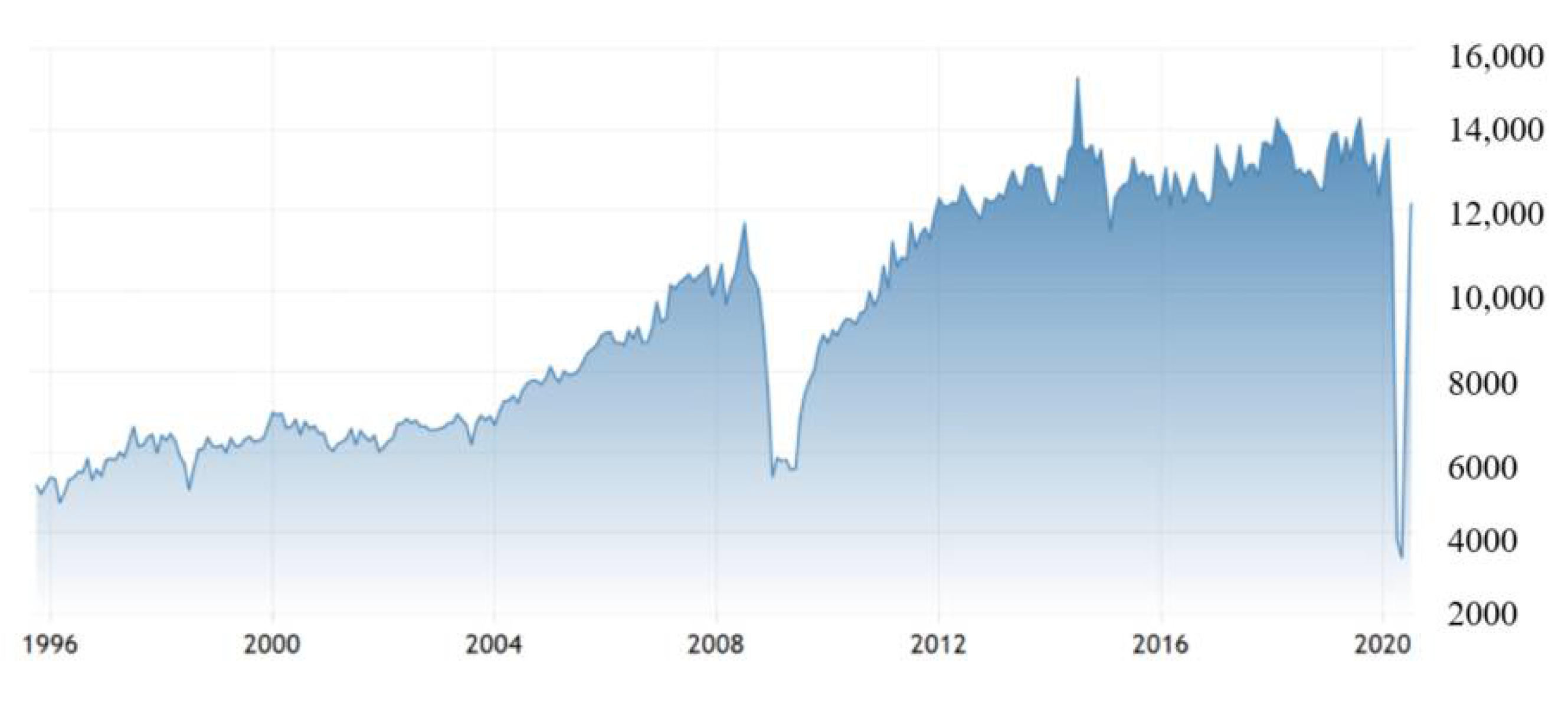

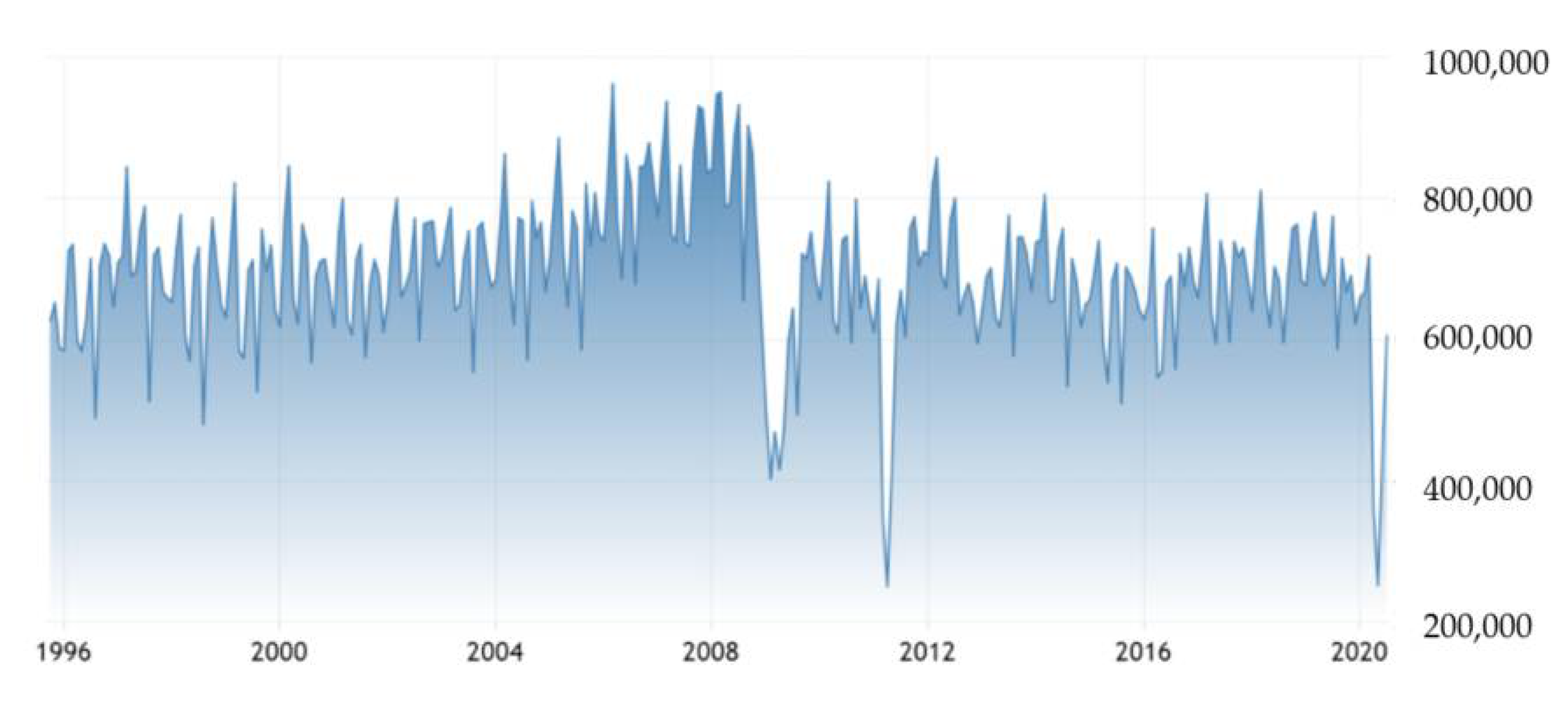



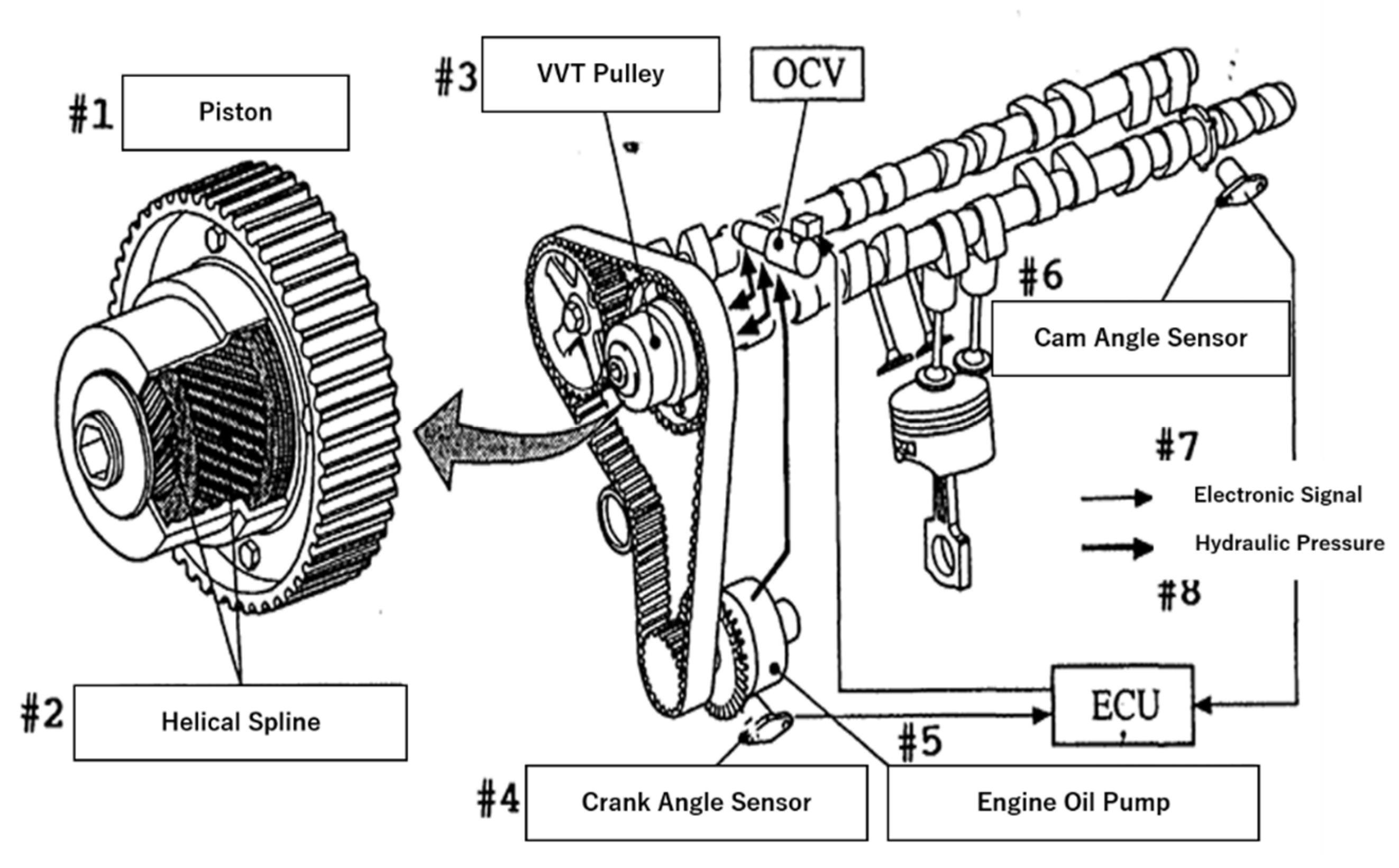
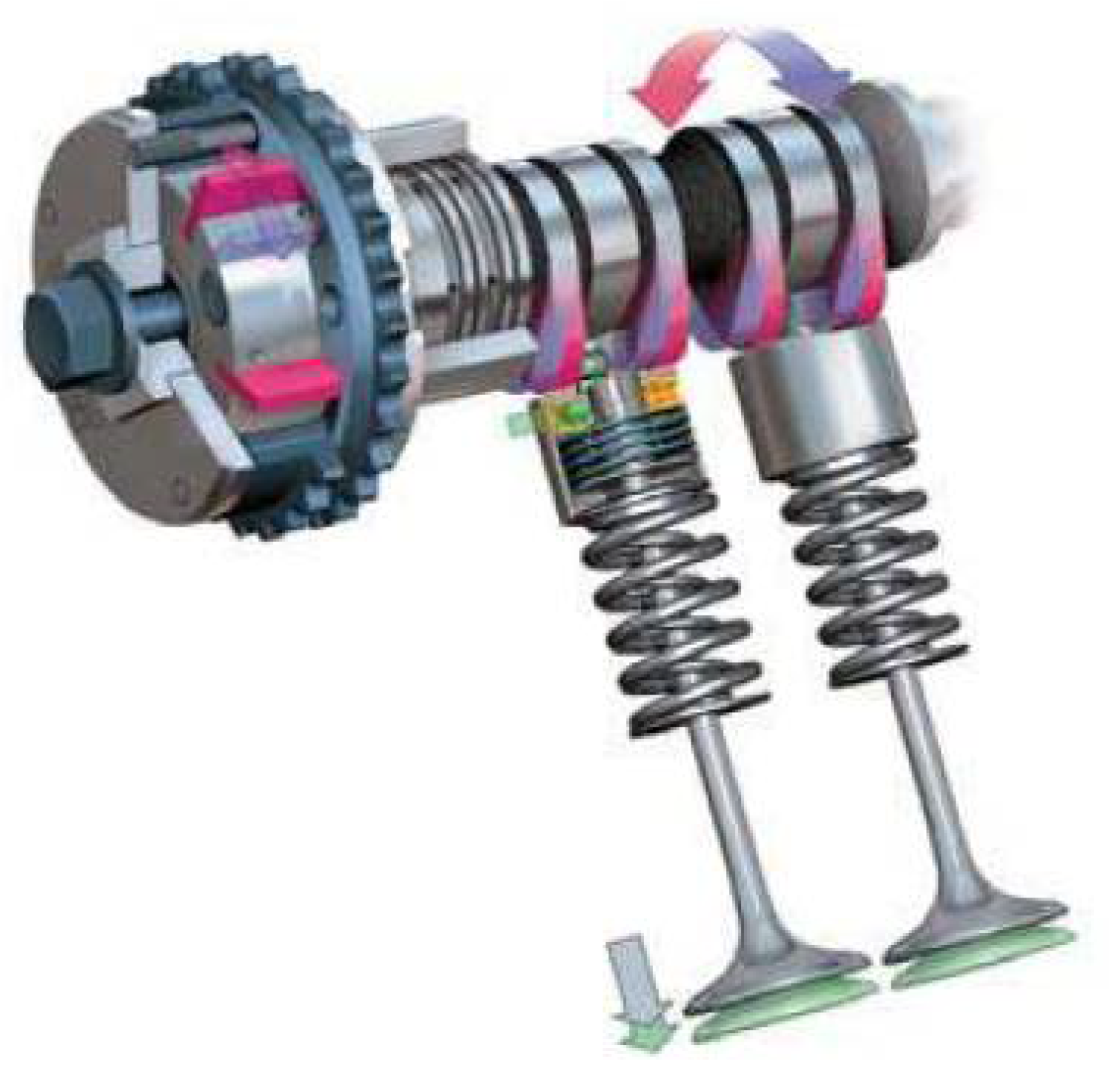
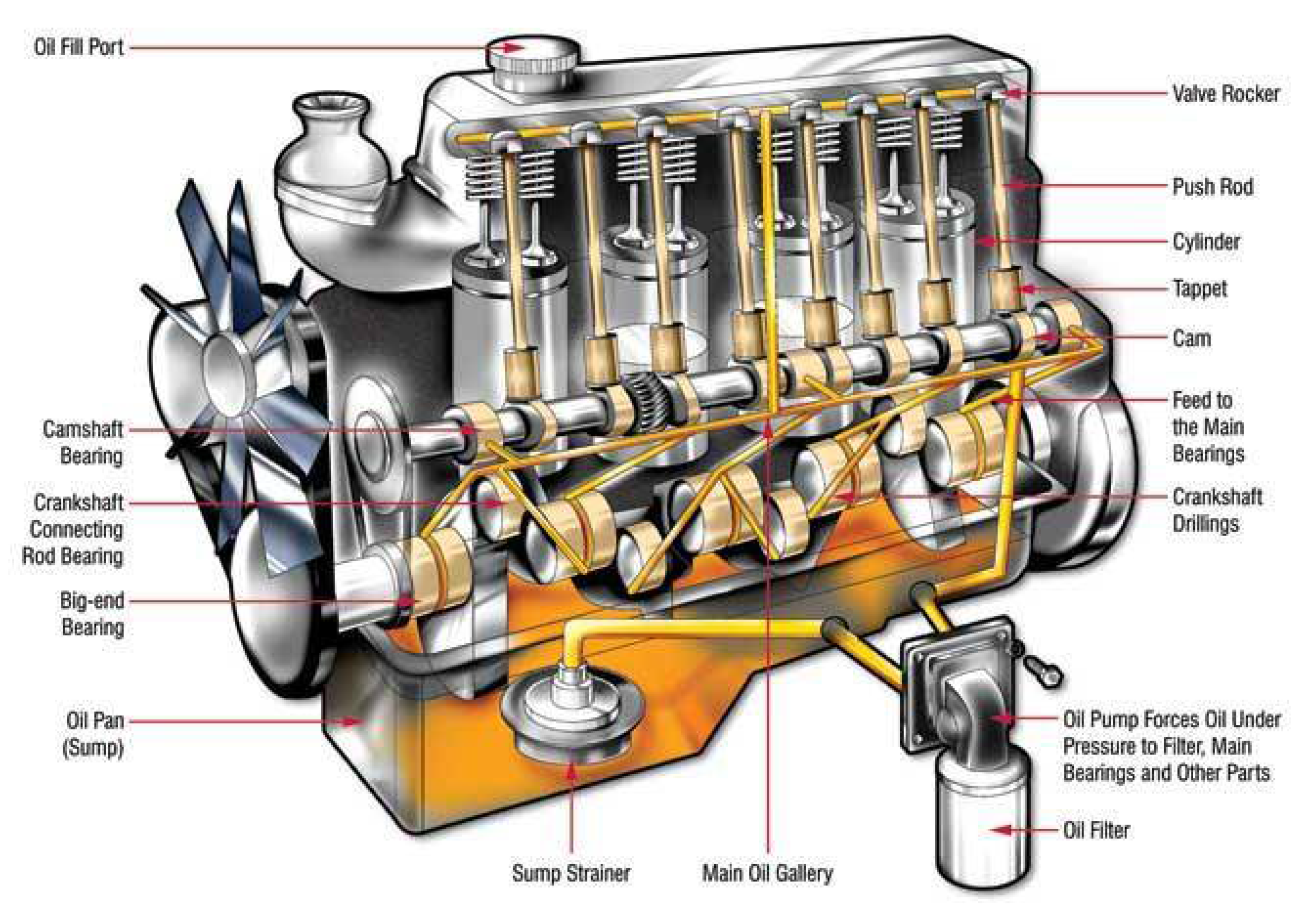
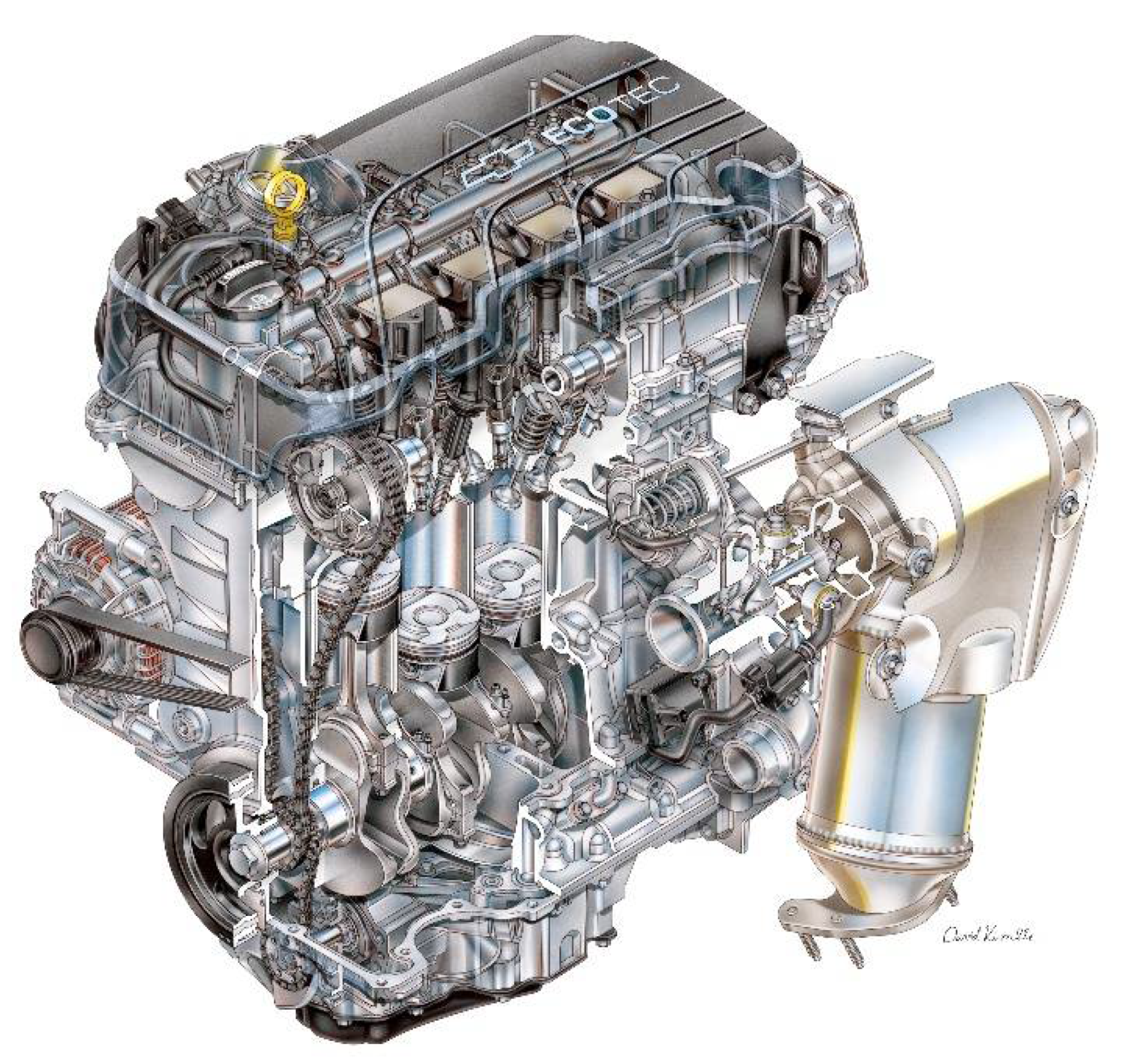












| Engine Type | Fuel Economy (City/Highway) [mpg] | Horsepower [hp] | |
|---|---|---|---|
| 2017 Chevrolet Sonic (US) | Four-Cylinder Turbo 1.4 L Ecotec engine | 25/33 | 138 |
| 2017 Honda Fit (Japan) | Four-Cylinder 1.5 L Earth Dreams Technology engine | 29/36 | 130 |
| 2017 Fiat 500 (EU) | 1.4 L four-cylinder engine | 31/38 | 101 |
| Engine Type | Fuel Economy (City/Highway) [mpg] | Torque [lb-ft] | Horsepower [hp] | |
|---|---|---|---|---|
| Ford F150 (US) | 3.5 L EcoBoost Twin-Turbocharged V6 | 18/25 | 400 | 375 |
| Toyota Highlander (Japan) | 3.5 L V6 DOHC Engine | 20/27 | 263 | 295 |
| Volkswagen Atlas (EU) | 3.6 L VR6 | 18/25 | 266 | 276 |
| Engine Type | Fuel Economy (City/Highway) [mpg] | Horsepower [hp] | |
|---|---|---|---|
| 2017 Subaru Outback (Japan) | 3.6 L six-cylinder flat engine | 25/32 | 256 |
| 2017 Porsche 911 (EU) | Six Cylinder Turbo 3.0 L | 10/29 | 370 |
| Battery Type | Driving Range (Fully Charged) [mile] | Charging Time at a Fast Charging Station (Up to 80%) | |
|---|---|---|---|
| Tesla Model S (US) | 100 kWh 400 V lithium-ion | 402 | 30 min |
| Nissan Leaf (Japan) | 40 kWh 350 V lithium-ion | 124 | 40 min |
| Honda Clarity Electric (Japan) | 25.5 kWh lithium-ion | 89 | 30 min |
| Renault New ZOE (EU) | Z.E. 50 battery 52 kWh lithium-ion | 245 | 1 h 05 min |
| BMW i3 (EU) | 42.2 kWh 352 V lithium-ion | 153 | 35 min |
| Hybrid Type | Fuel Economy While Hybrid Mode (City/Highway) [mpg] | |
|---|---|---|
| Volvo XC90 (EU) | Full Hybrid | 25 (* combined city/highway) |
| Toyota Prius (Japan) | Full Hybrid | 54/50 |
| Honda Insight LX and EX (Japan) | Full Hybrid | 55/49 |
| Fiat Chrysler (EU) | Mild Hybrid | 20/25 (* V6 engine) 17/22 (* V8 engine) |
| First Volkswagen eTSI (EU) | Mild Hybrid | 45 (* combined city/highway) |
| Chevrolet Volt (US) | PHEV | 43/42 |
| Ford Fusion (US) | PHEV | 43/41 |
| Mercedes-Benz E 300 de (EU) | PHEV | 51.5 (* combined city/highway) |
| The BMW 330e (EU) | PHEV | NA/36 |
| Honda Clarity (Japan) | PHEV | 42 (* combined city/highway) |
| Mitsubishi Outlander (Japan) | PHEV | 25 (* combined city/highway) |
| Driving Range [mile] | System Maximum Output [kW] | |
|---|---|---|
| Toyota Mirai (Japan) | 312 | 114 |
| Honda Clarity (Japan) | 360 | 130 |
| Mercedes-Benz GLC F-CELL (EU) | 248 | 155 |
Publisher’s Note: MDPI stays neutral with regard to jurisdictional claims in published maps and institutional affiliations. |
© 2020 by the authors. Licensee MDPI, Basel, Switzerland. This article is an open access article distributed under the terms and conditions of the Creative Commons Attribution (CC BY) license (http://creativecommons.org/licenses/by/4.0/).
Share and Cite
Shigeta, N.; Hosseini, S.E. Sustainable Development of the Automobile Industry in the United States, Europe, and Japan with Special Focus on the Vehicles’ Power Sources. Energies 2021, 14, 78. https://doi.org/10.3390/en14010078
Shigeta N, Hosseini SE. Sustainable Development of the Automobile Industry in the United States, Europe, and Japan with Special Focus on the Vehicles’ Power Sources. Energies. 2021; 14(1):78. https://doi.org/10.3390/en14010078
Chicago/Turabian StyleShigeta, Naoya, and Seyed Ehsan Hosseini. 2021. "Sustainable Development of the Automobile Industry in the United States, Europe, and Japan with Special Focus on the Vehicles’ Power Sources" Energies 14, no. 1: 78. https://doi.org/10.3390/en14010078
APA StyleShigeta, N., & Hosseini, S. E. (2021). Sustainable Development of the Automobile Industry in the United States, Europe, and Japan with Special Focus on the Vehicles’ Power Sources. Energies, 14(1), 78. https://doi.org/10.3390/en14010078






